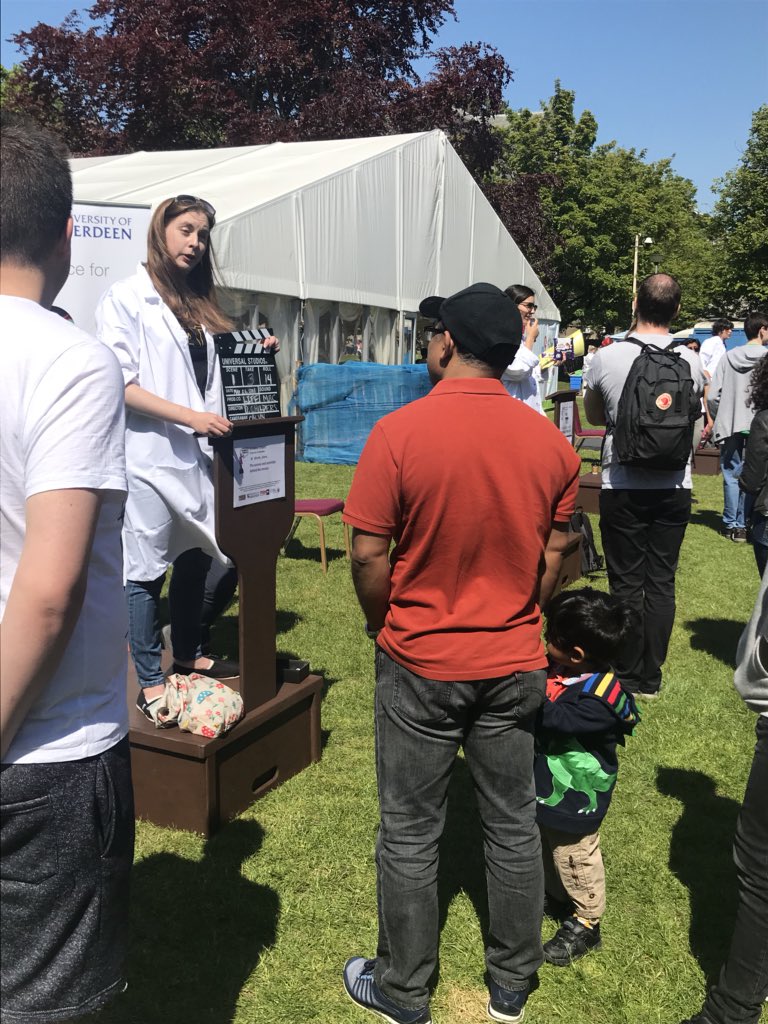
Senior Lecturer
- About
-
- Email Address
- delma.childers@abdn.ac.uk
- Telephone Number
- +44 (0)1224 437495
- Office Address
Institute of Medical Sciences
Room 4.22
- School/Department
- School of Medicine, Medical Sciences and Nutrition
Biography
Lecturer in Medical Sciences, 2019 - present
Research Fellow with the Aberdeen Fungal Group, 2016 - 2019
PDRA at University of Edinburgh, School of Physics and Astronomy 2015-2016
Postdoctoral Researcher with the Aberdeen Fungal Group 2013-2015
PhD (Microbiology & Immunology), University of Texas Health Science Center at San Antonio, San Antonio, Texas, USA 2006-2012
BSc (Biology), Schreiner University, Kerrville, Texas, USA 2003-2006
Memberships and Affiliations
- Internal Memberships
-
Aberdeen Fungal Group
Elected Member, University Senate (2020-2024)
Infection and Immunology Research Programme, Institute of Medical Sciences
- External Memberships
-
External Affiliations
Board of Reviewers, Microbiology journal
Elected Eukaryotic Division member, Microbiology Society, 2021-2023
Member of the Young Academy of Scotland, 2020-2025
Public Engagement
Dr. Delma Childers has been a STEM Ambassador since 2015. She has contributed to University of Aberdeen's Door's Open Day at the IMS Building and family activities at May Festival.
Dr. Childers was awarded 'Scientist of the Week' during week 7 in the 2020 Medical Research Zone for 'I'm a Scientist... Stay at Home'. She enjoyed answering student's questions about science and careers during lockdown chats hosted by the 'I'm a Scientist' team.
Dr. Childers also was among the first group of women scientists to take part in Aberdeen's inaugural Soapbox Science event in May 2018.
Latest Publications
Is Metabolic Generalism the Breakfast of Champions for Pathogenic Candida species?
PLoS PathogensContributions to Journals: ArticlesImpact of secreted glucanases upon the cell surface and fitness of Candida albicans during colonisation and infection.
The Cell Surface, vol. 11, 100128Contributions to Journals: ArticlesA CO2 sensing module modulates β-1,3-glucan exposure in Candida albicans.
mBio, vol. 15, no. 2, e0189823Contributions to Journals: ArticlesGlucose-enhanced oxidative stress resistance-A protective anticipatory response that enhances the fitness of Candida albicans during systemic infection
PLoS Pathogens, vol. 19, no. 7, pp. e1011505Contributions to Journals: ArticlesPodcast: Into the Headlines: Strange Sickness
Non-textual Forms: Digital or Visual Products
- Research
-
Research Overview
My interests are centered around understanding how fungi adapt to their hosts to cause infections. The major focus of my research is to investigate how the antimicrobial-resistant emerging fungal pathogen, Candida glabrata, remodels its surface to inhibit host immune activation and control disease outcomes. This research programme uses cytometric analyses, innate immune interaction assays, and molecular approaches to establish how this important intracellular fungal pathogen is detected by host cells and evades clearance mechanisms.
Another facet of my research builds on my earlier work demonstrating that Saccharomyces cerevisiae clinical isolates are predominantly metabolic generalists that have lost glucose repression. This work is currently exploring how fungal metabolic mechanisms contribute to microbial persistence in their hosts.
My main aim is for my research to lead to a better understanding of fungal antimicrobial resistance, persistence, and pathogenesis. Understanding these facets of fungal biology is the key to improving diagnosis and treatment of serious fungal diseases.
Research Areas
Accepting PhDs
I am currently accepting PhDs in Biomedical Sciences.
Please get in touch if you would like to discuss your research ideas further.
Research Specialisms
- Microbiology
- Molecular Biology
- Mycology
Our research specialisms are based on the Higher Education Classification of Subjects (HECoS) which is HESA open data, published under the Creative Commons Attribution 4.0 International licence.
Supervision
My current supervision areas are: Biomedical Sciences.
I am currently accepting expressions of interest from students interested in pursuing a Masters by Research in Medical Sciences degree.
Previous lab members
Eszter Denes, MSc by Research in Medical Sciences
Funding and Grants
Carnegie Trust Research Incentives Grant, March 2020-2021
Royal Society Research Grant, October 2020-2021
Academy of Medical Sciences Springboard Round 6 Award, 2021-2023
- Teaching
-
Non-course Teaching Responsibilities
Programme Lead
MSc by Research in Medical Sciences
Other roles
Offering Honours and MSc projects
Personal Tutor
- Publications
-
Page 1 of 1 Results 1 to 31 of 31
Is Metabolic Generalism the Breakfast of Champions for Pathogenic Candida species?
PLoS PathogensContributions to Journals: ArticlesImpact of secreted glucanases upon the cell surface and fitness of Candida albicans during colonisation and infection.
The Cell Surface, vol. 11, 100128Contributions to Journals: ArticlesA CO2 sensing module modulates β-1,3-glucan exposure in Candida albicans.
mBio, vol. 15, no. 2, e0189823Contributions to Journals: ArticlesGlucose-enhanced oxidative stress resistance-A protective anticipatory response that enhances the fitness of Candida albicans during systemic infection
PLoS Pathogens, vol. 19, no. 7, pp. e1011505Contributions to Journals: ArticlesPodcast: Into the Headlines: Strange Sickness
Non-textual Forms: Digital or Visual ProductsThe Candida glabrata Parent Strain Trap: How Phenotypic Diversity Affects Metabolic Fitness and Host Interactions
Microbiology spectrum, vol. 11, no. 1, e03724-22Contributions to Journals: ArticlesNature of b-1,3-Glucan-Exposing Features on Candida albicans Cell Wall and Their Modulation
mBio, vol. 13, no. 6, e02605-22Contributions to Journals: ArticlesImpact of changes at the Candida albicans cell surface upon immunogenicity and colonisation in the gastrointestinal tract
The Cell Surface, vol. 8, 100084Contributions to Journals: ArticlesScience in The Media Vs. The Wonderdrug Valley of Death
Non-textual Forms: Web Publications and WebsitesWhat ‘Omics can tell us about antifungal adaptation
FEMS Yeast Research, vol. 21, no. 8, foab070Contributions to Journals: ArticlesImmune cells fold and damage fungal hyphae
PNAS, vol. 118, no. 15, e2020484118Contributions to Journals: ArticlesCOVID-19 and the Uncertain Future of PhD Research in Scotland
Non-textual Forms: Web Publications and WebsitesEpitope shaving promotes fungal immune evasion
mBio, vol. 11, no. 4, e00984-20Contributions to Journals: ArticlesNine Things Genomics Can Tell Us About Candida auris
Frontiers in Genetics, vol. 11, 351Contributions to Journals: Review articles- [ONLINE] DOI: https://doi.org/10.3389/fgene.2020.00351
- [OPEN ACCESS] http://aura.abdn.ac.uk/bitstream/2164/14371/1/fgene_11_00351.pdf
- [ONLINE] View publication in Scopus
Impact of the Environment upon the Candida albicans Cell Wall and Resultant Effects upon Immune Surveillance
The Fungal Cell Wall: An Armour and a Weapon for Human Fungal Pathogens. Latge, J. (ed.). Springer, pp. 297-330, 34 pagesChapters in Books, Reports and Conference Proceedings: ChaptersNon-canonical signalling mediates changes in fungal cell wall PAMPs that drive immune evasion
Nature Communications, vol. 10, 5315Contributions to Journals: ArticlesGrowth, Viability, and Death of Planktonic and Biofilm Sphingomonas desiccabilis in Simulated Martian Brines
Astrobiology, vol. 19, no. 1, pp. 87-98Contributions to Journals: Articles- [ONLINE] DOI: https://doi.org/10.1089/ast.2018.1840
- [OPEN ACCESS] http://aura.abdn.ac.uk/bitstream/2164/15718/1/ast.2018.1840.pdf
- [ONLINE] View publication in Scopus
Hypoxia Promotes Immune Evasion by Triggering β-glucan Masking on the Candida albicans Cell Surface via Mitochondrial and cAMP-Protein Kinase A Signaling
mBio, vol. 9, e01318-18Contributions to Journals: ArticlesLactate signalling regulates fungal β-glucan masking and immune evasion
Nature Microbiology, vol. 2, 16238Contributions to Journals: ArticlesHost-Imposed Copper Poisoning Impacts Fungal Micronutrient Acquisition during Systemic Candida albicans Infections
PloS ONE, vol. 11, no. 6, e0158683Contributions to Journals: ArticlesThe Rewiring of Ubiquitination Targets in a Pathogenic Yeast Promotes Metabolic Flexibility, Host Colonization and Virulence
PLoS Pathogens, vol. 12, no. 4, 1005566Contributions to Journals: ArticlesFilament condition-specific response elements control the expression of NRG1 and UME6, key transcriptional regulators of morphology and virulence in Candida albicans
PloS ONE, vol. 10, no. 3, e0122775Contributions to Journals: ArticlesNew Clox Systems for rapid and efficient gene disruption in Candida albicans
PloS ONE, vol. 9, no. 6, e100390Contributions to Journals: ArticlesA 5′ UTR-mediated Translational Efficiency Mechanism Inhibits the Candida albicans Morphological Transition
Molecular Microbiology, vol. 92, no. 3, pp. 570-585Contributions to Journals: Articles- [ONLINE] DOI: https://doi.org/10.1111/mmi.12576
Conflicting interests in the pathogen-host tug of war: fungal micronutrient scavenging versus mammalian nutritional immunity
PLoS Pathogens, vol. 10, no. 3, e1003910Contributions to Journals: Literature ReviewsNew Clox systems for rapid and efficient gene disruption in Candida albicans
American society of MicrobiologyContributions to Conferences: AbstractsNew Clox systems for rapid and efficient gene disruption in Candida albicans
American society of MicrobiologyContributions to Conferences: PostersStress adaptation in a pathogenic fungus
Journal of Experimental Biology, vol. 217, no. 1, pp. 144-155Contributions to Journals: Articles- [ONLINE] DOI: https://doi.org/10.1242/jeb.088930
- [OPEN ACCESS] http://aura.abdn.ac.uk/bitstream/2164/5474/1/144.full.pdf
Comparative evolution of morphological regulatory functions in Candida species
Eukaryotic Cell, vol. 12, no. 10, pp. 1356-1368Contributions to Journals: Articles- [ONLINE] DOI: https://doi.org/10.1128/EC.00164-13
Coevolution of morphology and virulence in Candida species
Eukaryotic Cell, vol. 10, no. 9, pp. 1173-1182Contributions to Journals: Articles- [ONLINE] DOI: https://doi.org/10.1128/EC.05085-11
UME6, a novel filament-specific regulator of Candida albicans hyphal extension and virulence
Molecular Biology of the Cell, vol. 19, no. 4, pp. 1354-1365Contributions to Journals: Articles- [ONLINE] DOI: https://doi.org/10.1091/mbc.E07-11-1110
- [OPEN ACCESS] http://aura.abdn.ac.uk/bitstream/2164/3158/1/banerjee_et_al_2008.pdf

